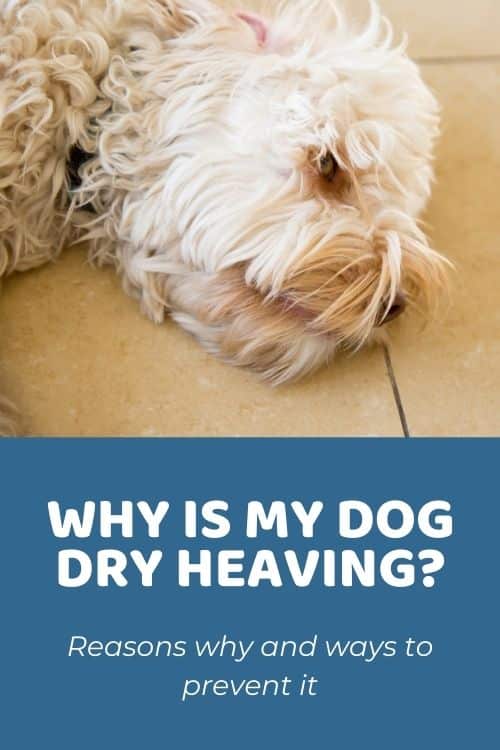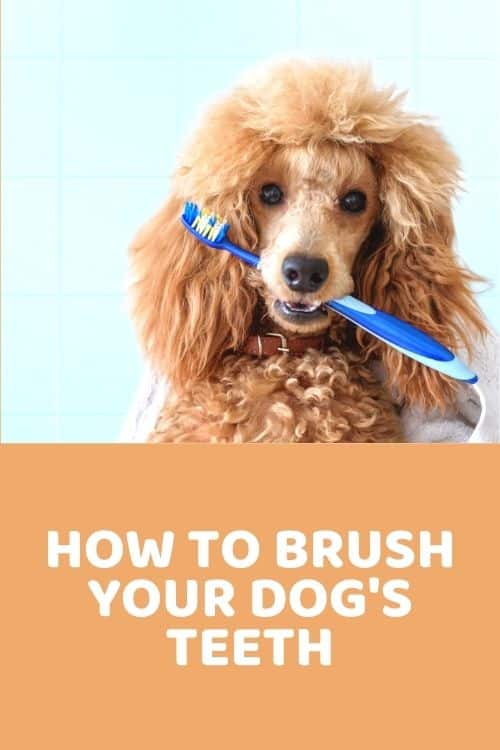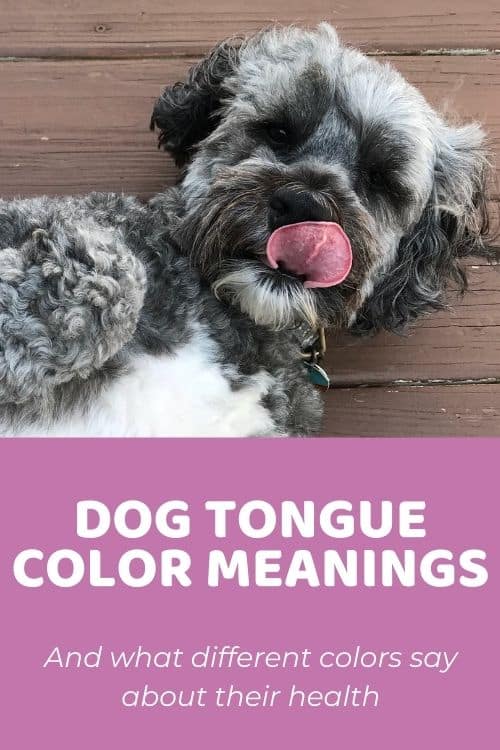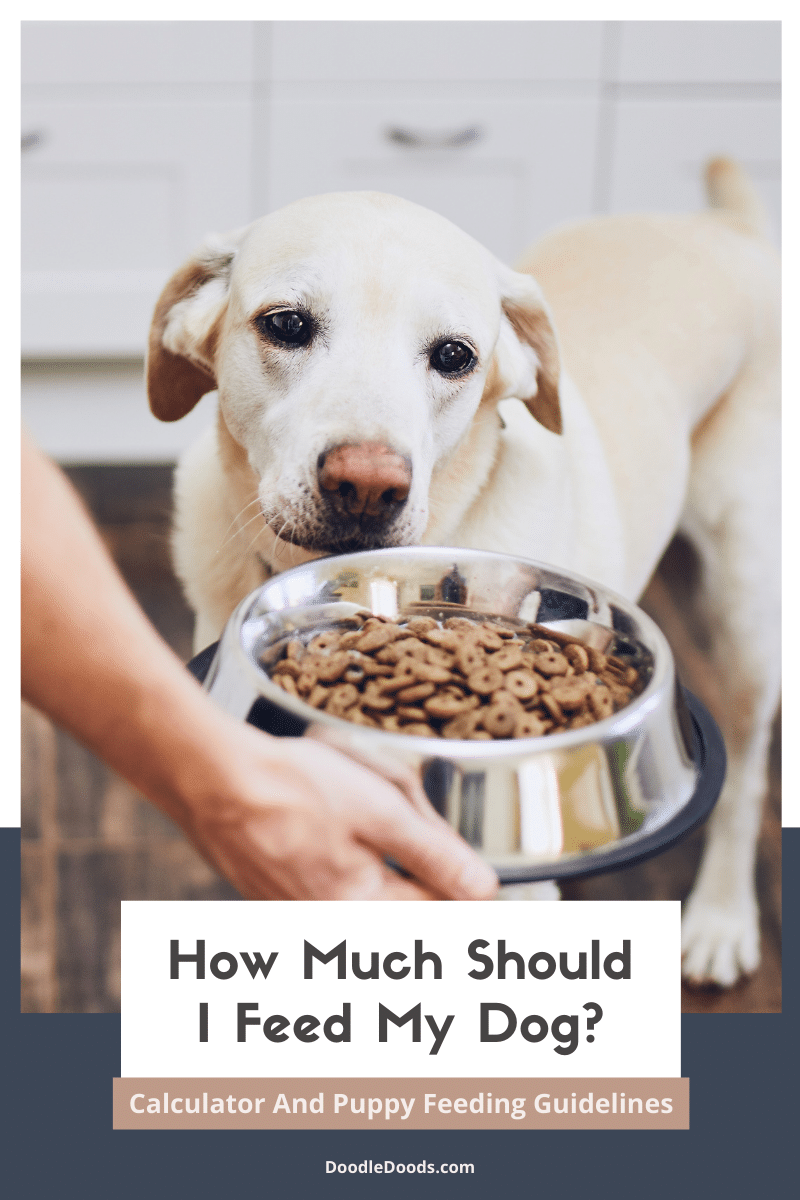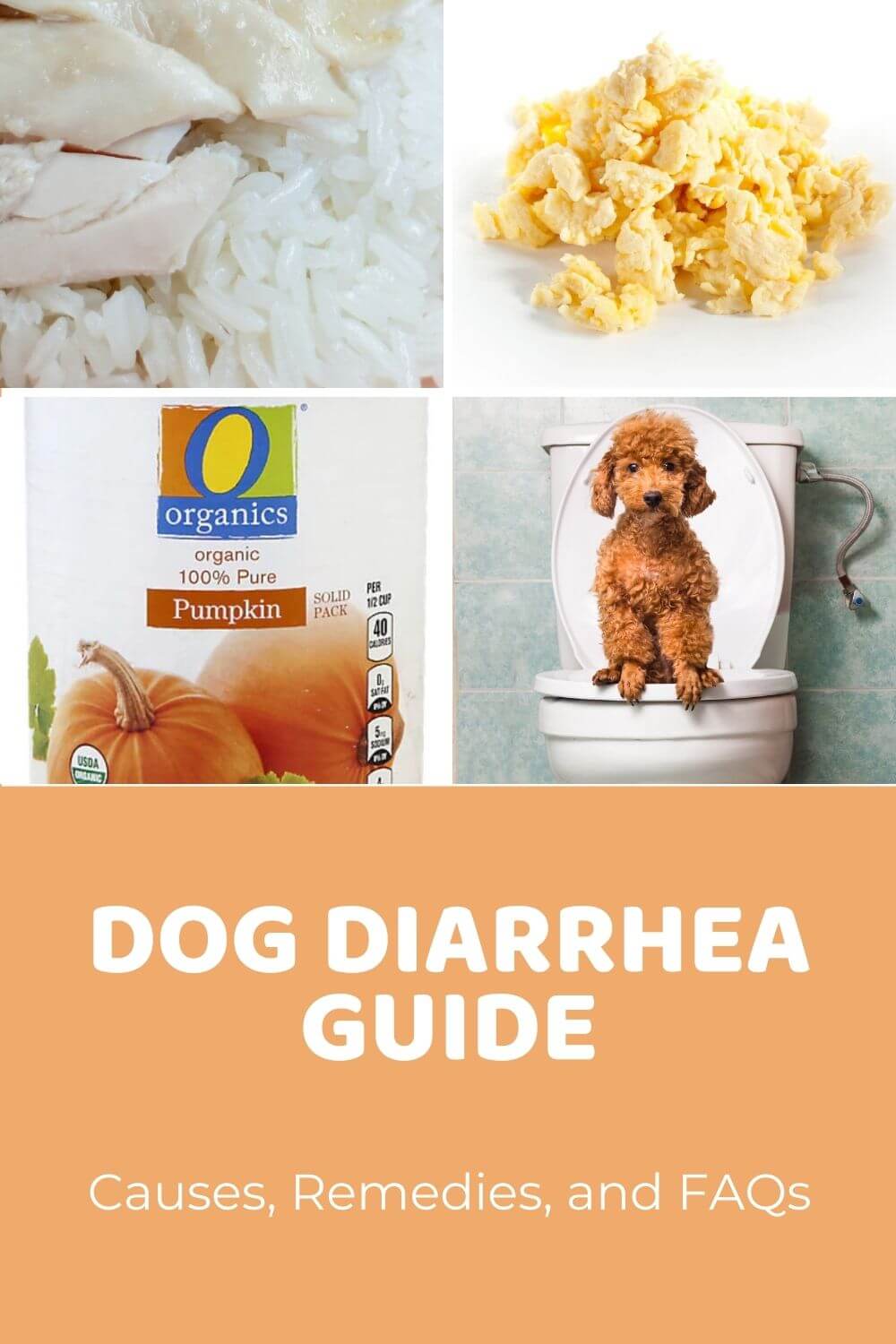Here we take a look at the fairly common but potentially serious issue of dog dry heaving, covering a range of possible reasons for your pup exhibiting this behavior, what you should do about it, and a few ways you might help to prevent it.
Table of Contents
- What is Dry Heaving?
- Why Does Dog Dry Heaving Happen?
- What To Do If Your Dog Is Dry Heaving
- How Can I Prevent Dry Heaving?
- Frequently Asked Questions About Dog Dry Heaving
What is Dry Heaving?
Dry heaving, or non-productive heaving as it’s also known, is when your dog makes all the sounds and movements associated with vomiting – except nothing comes up. They might be retching, gagging, or coughing with their mouth wide open, head bent and neck arched. Their abdomen will also be contracting, and you might notice a small amount of saliva dripping from their mouth. This is not to be confused with vomit.
Why Does Dog Dry Heaving Happen?
While occasional vomiting in dogs is not really something to worry about, dry heaving could indicate that there is something seriously wrong. Let’s take a look at the some of the reasons a dog displays this particular behavior:
Eating Too Quickly
One of the key reasons your pup might start to dry heave is that a piece of kibble or some other food fragment becomes lodged in their throat. This is much more likely to happen if they are scarfing their food down without taking time to properly chew it first, as some dogs tend to do. If you find that you barely blink and your pup’s meal is gone, you might need to do something about this behavior.
More often than not, all that will happen if something gets stuck in your pooch’s airway is that they will cough it back up – no worries. However, gobbling things down this quickly can also lead on to some serious issues. For instance, what if your pet can’t remove the item stuck in their throat and starts to choke? Speed eating is also considered a significant risk factor for both regular food bloat and GDV (see below).
Foreign Object in Airway
Something that is not always preventable, especially with hounds that love to get into everything, is them chowing down on something they shouldn’t. While this is usually more of an annoyance than a serious issue, if your pup gets interrupted in their chewing, they may attempt to swallow the item while it’s still too big, resulting in it getting stuck in their throat.
The subsequent dry heaving that occurs will be them trying to remove the item and restore their airway. Usually, this will do the trick if it’s just a slight blockage. However, with something larger, or if the item becomes firmly wedged, this might not work. Never attempt to remove anything from your dog’s throat. You could cause damage or push it further down, completely blocking their breathing. Instead, leave it to the professionals.
Nausea
Dry heaving can also occur in either the time leading up to your dog vomiting or the period directly after they have vomited. In this case, it indicates that they have an upset stomach. There will obviously be some vomit alongside other side effects of gastrointestinal upset such as abdominal pain, excessive amounts of drool, lethargy, and an unwillingness to eat.
While it may be that your pup has eaten something they shouldn’t, it could also be the case that they are sensitive to one of the ingredients in a new bag of food. Alternatively, nausea is a common symptom of some slightly more serious conditions such as parasitic infection. So it’s always best to get a medical opinion of these kinds of symptoms if you are at all in doubt about what might have caused them.
Gastric Dilation and Volvulus (Canine Bloat)
Bloat may seem innocent enough. After all, it’s a common and very mild human complaint. However, in dogs, it’s a whole different story. In fact, if left untreated, this kind of bloat could prove to be fatal for your four-legged friend. What happens is their stomach expands with gas and then twists, blocking both the entrance and exit areas.
The dry heaving you’re seeing is your pup trying to release some of the trapped gas, but they won’t be able to. The pressure caused by their stomach will eventually cut off the blood supply to other major organs in the body, including the heart. Other common signs of bloat are a swollen abdomen and labored breathing. This condition, which is more likely to occur in large-chested dogs, requires emergency surgery to correct.
Kennel Cough
You’ve likely heard of the highly-contagious upper respiratory issue that is kennel cough. This illness creates nasal discharge that can irritate the sensitive lining of the throat, causing a dry hacking cough. In some cases, your pup may cough so hard that they stimulate their gag reflex, which can result in dry heaving as well as actual vomiting.
If you know for sure that your dog has kennel cough, then you need to keep them away from all other canines to limit the spread of this nasty condition. If you don’t know for sure, ensure you call your vet for advice before taking them to the clinic. They may prefer to do a house visit to limit the chances of passing this on to other dogs at their practice.
Tonsillitis or Pharyngitis
More likely to affect smaller or brachycephalic breeds, tonsillitis, and the resultant pharyngitis (inflammation of the pharynx) is a viral infection that is best treated with antibiotics. This kind of inflammation can not only cause a sore throat, but it can also block access to the airway and trigger your dog’s gag reflex too. This is why you might see them dry heave with this condition.
Tonsillitis is often a secondary infection and indicates that something else is up with your pup’s mouth or throat. It’s another good reason why it is so crucial that you include dental care as part of your regular routine. Without frequent brushing, tartar and bacteria can accumulate on the teeth, which can lead on to this kind of infection and the associated symptoms – such as dry heaving.
Tumor Obstruction
If you find that your dog is dry heaving quite often – whether it seems serious or not – it could be that they have some kind of growth in their throat that’s making it difficult for them to swallow and, more seriously, restricting the flow of air to their lungs. You might also notice your pal coughing or digging or scratching around their mouth or throat, trying to remove the problem.
Not only can a growth in the throat impair breathing in this way, but a growth in the lungs will also do something very similar. If you suspect either of these are the case with your pet, then get them directly down to the vet. You might be tempted to take a look yourself to see if you can see anything. However, it can be difficult for a non-expert to determine the presence of something in the throat that’s not supposed to be there, so it’s best to just let the vet take care of it.
What To Do If Your Dog Is Dry Heaving
Unless it’s super obvious why your dog is dry heaving, for instance, if they are standing over their food bowl or your half-eaten shoe, you should treat it as a medical emergency and get your pup to the vet just as soon as you can. Even if the cause is apparent, if the problem persists for more than a couple of minutes, it could be much more serious than you realize.
When it comes to issues with breathing, it’s always best to be safe than sorry. It might be that your dog chokes up something in the car on the way to the vet, or that they simply have a persistent cough, but it could also be something a lot more severe than that. If your pet is unable to catch their breath properly, or if their tongue or gums start to turn blue, any delay in getting them to the vet could prove to be fatal for them.
How Can I Prevent Dry Heaving?
As there are many different causes of dry heaving, there are a range of preventative measures you can take to avoid some of the most common causes. Here are a few ideas:
Invest in a Slow Feeder
Slow feeders, and likewise food puzzles, usually work by restricting your dog’s easy access to their food. They might let tiny amounts out at a time or require your pup to figure something out to get portions of their food served up to them. Basically, what this does is force your pet to take their time while eating. This reduces the chances of them choking on unchewed bites and can also help prevent bloat.
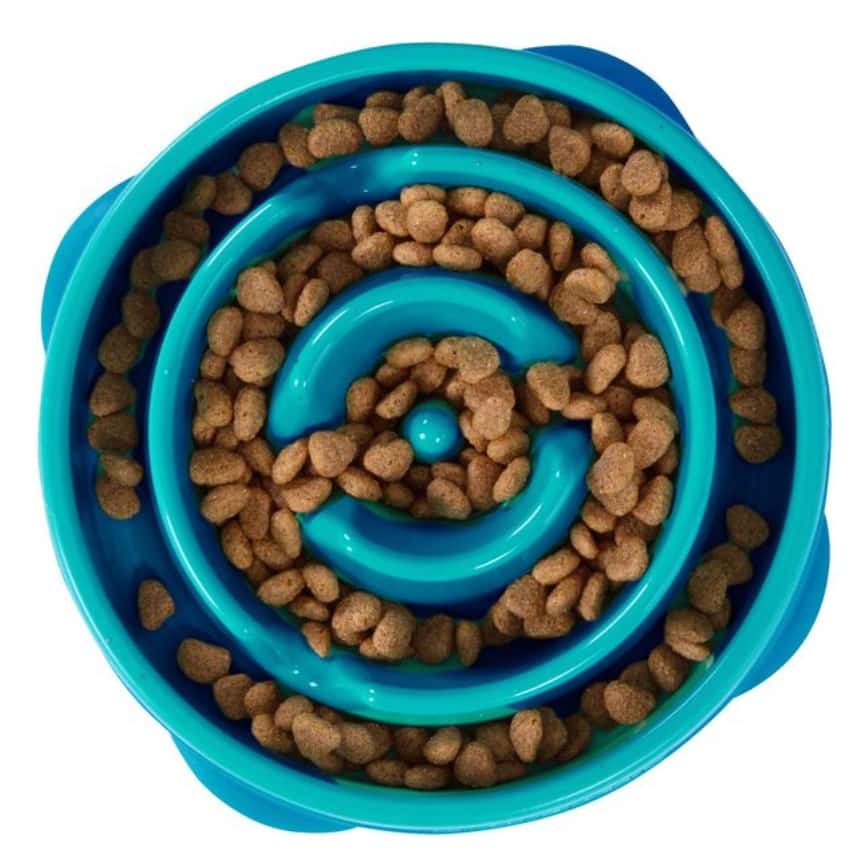
Limit Activity for Half an Hour
A lot of stomach issues can arise from your pup bouncing around with a full tummy. That’s why it’s a good idea to avoid exercising them directly after their meals. Instead, encourage them to rest, relax and give their stomach a chance to digest the food without it being all churned around. This gives you a great excuse for some after-dinner snuggles on the couch with your favorite fur baby.
Stick to a Feeding Schedule
If dogs aren’t fed regularly, they are more likely to be super hungry to the point they wolf down their food rather than taking their time with it. Feeding on a schedule also helps your dog to understand that their current meal very definitely is not their last. When they can trust that more food is coming and know when it’s coming, they can take it easy and actually chew their kibble properly.
Keep Chewable Items Out of Reach
While it’s impossible to remove everything from your house that your pet may choose to gnaw on, some of the more obvious items like shoes and dirty socks can usually be stowed safely away. If your pup is a little chew monster, then this is something you should definitely tackle in their training. Otherwise, you might want to invest in some dog chews that will help your pup to satisfy this urge in a better, not to mention safer, way.
Obviously, though, it is not going to be possible to avoid all potential causes of dry heaving. If you have put these measures in place and are still having issues, then it could be down to something a little more serious than you were hoping. If you are ever in doubt over anything to do with your pet’s health, you should always seek veterinary assistance. These are the only people who can truly successfully diagnose your pet and put your mind at ease in the process – that’s definitely worth a quick trip out in the car.
Frequently Asked Questions About Dog Dry Heaving
What does it mean if my dog is dry heaving?
Dry heaving is where your dog looks like they are trying to vomit but is unable to bring anything up. This can occur for a variety of different reasons. It often indicates that they might either have stomach issues or have something stuck in their throat. However, it could also be a symptom of a serious underlying condition. It can be tough for owners to know which of these it might be, so a vet check is best.
When should I worry about my dog dry heaving?
Dry heaving is often seen before, during, and after vomiting. If this is the case, then it’s likely that your pup just has a bit of a poorly tummy. If not, then it could be something altogether more sinister. Take a look around and see if there is an obvious choking hazard nearby that could account for their behavior. If the problem persists for longer than a few minutes with your dog not bringing up anything, get them to the vet sharp.
Dog ownership is an absolute joy. There’s no doubt about that. However, just like parenthood, it can have its scary moments too. It’s not a pleasant feeling to see your pup clearly in distress, as they might be when they are having issues with their tummy, mouth, or throat. That’s why it pays to be well informed about some of the most common canine ailments, so you know just what to do should the situation arise. Hopefully, the information included in this article proves helpful if you ever find yourself with a dry heaving dog on your hands.
Learn How to Care for Your Doodle Puppy!
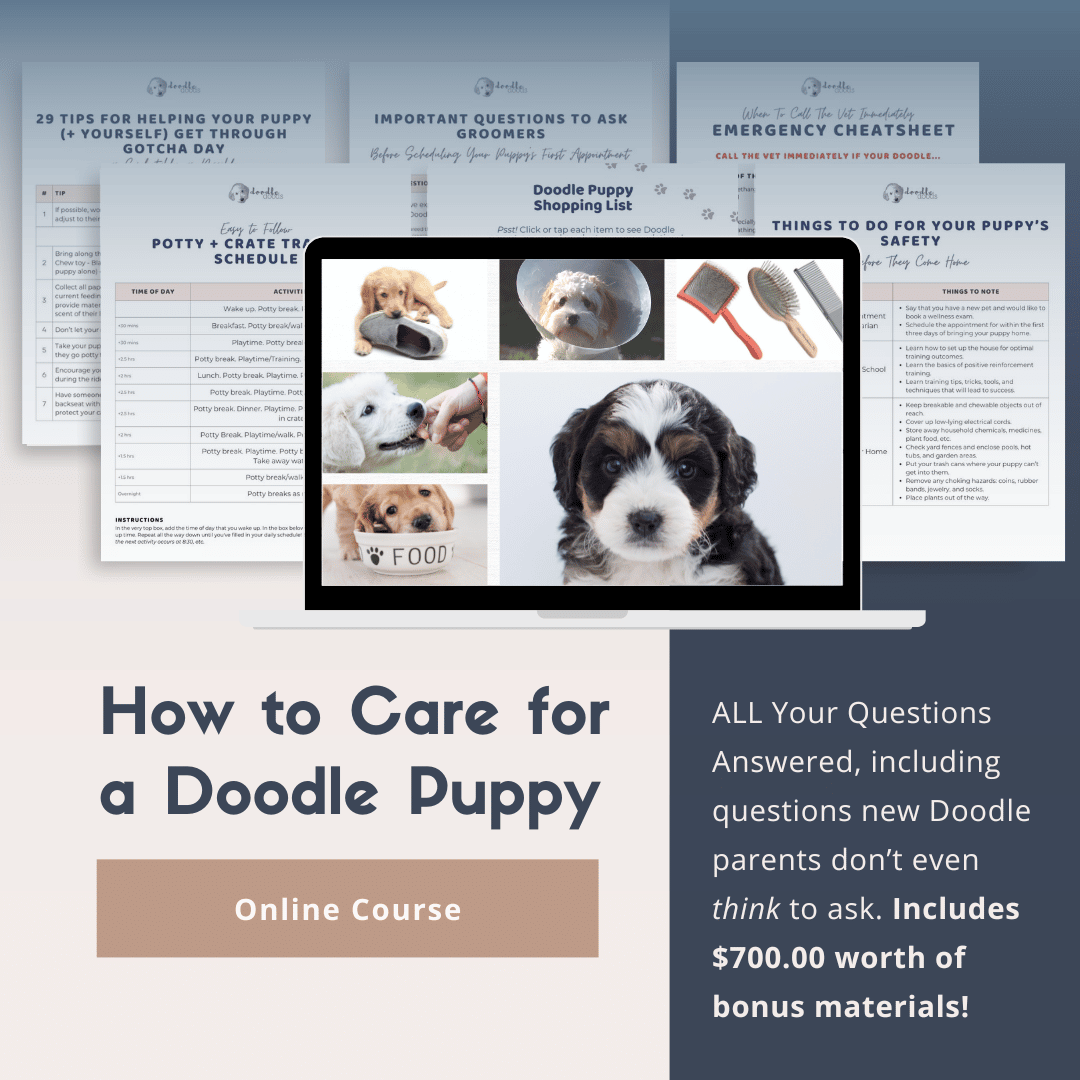
Perfect for first-time Doodle parents, get ALL your questions answered, including questions new Doodle parents don’t even think to ask.
Plus, get $700 worth of Bonus Materials for FREE, including:- Doodle Parenthood Community and Support Group ($190 value)
- Doodle Puppy Growth Tracker ($20 value)
- EMERGENCY Cheatsheet: When To Call The Vet Immediately ($50 value)
- HELP! Button ($145 value)
- And SO MUCH MORE!
The information on this page is for informational purposes only. It is not intended to be a substitute for qualified professional veterinary advice, diagnosis, or treatment. Always seek the advice of your veterinarian or other qualified animal health provider with any questions you may have.

